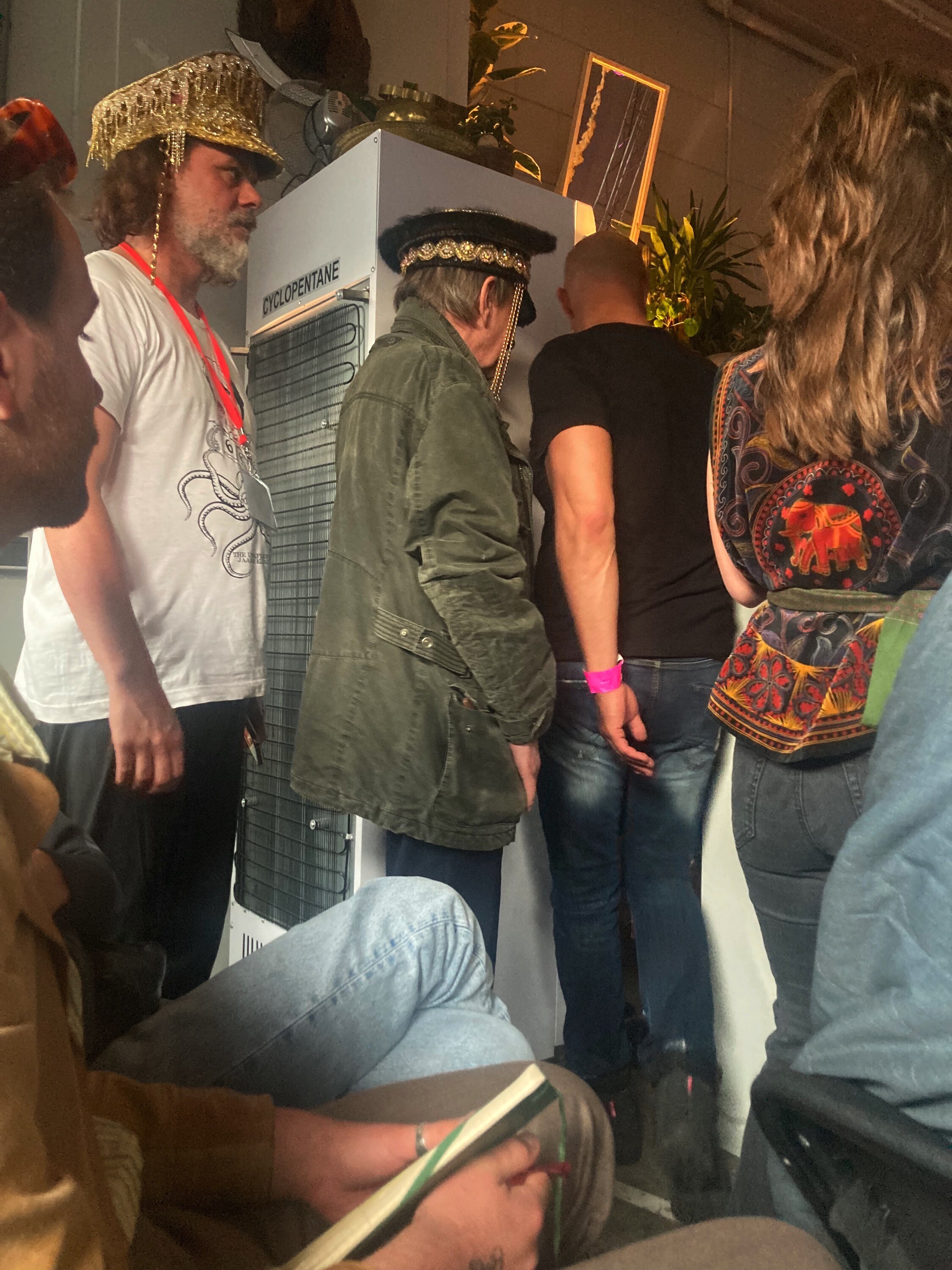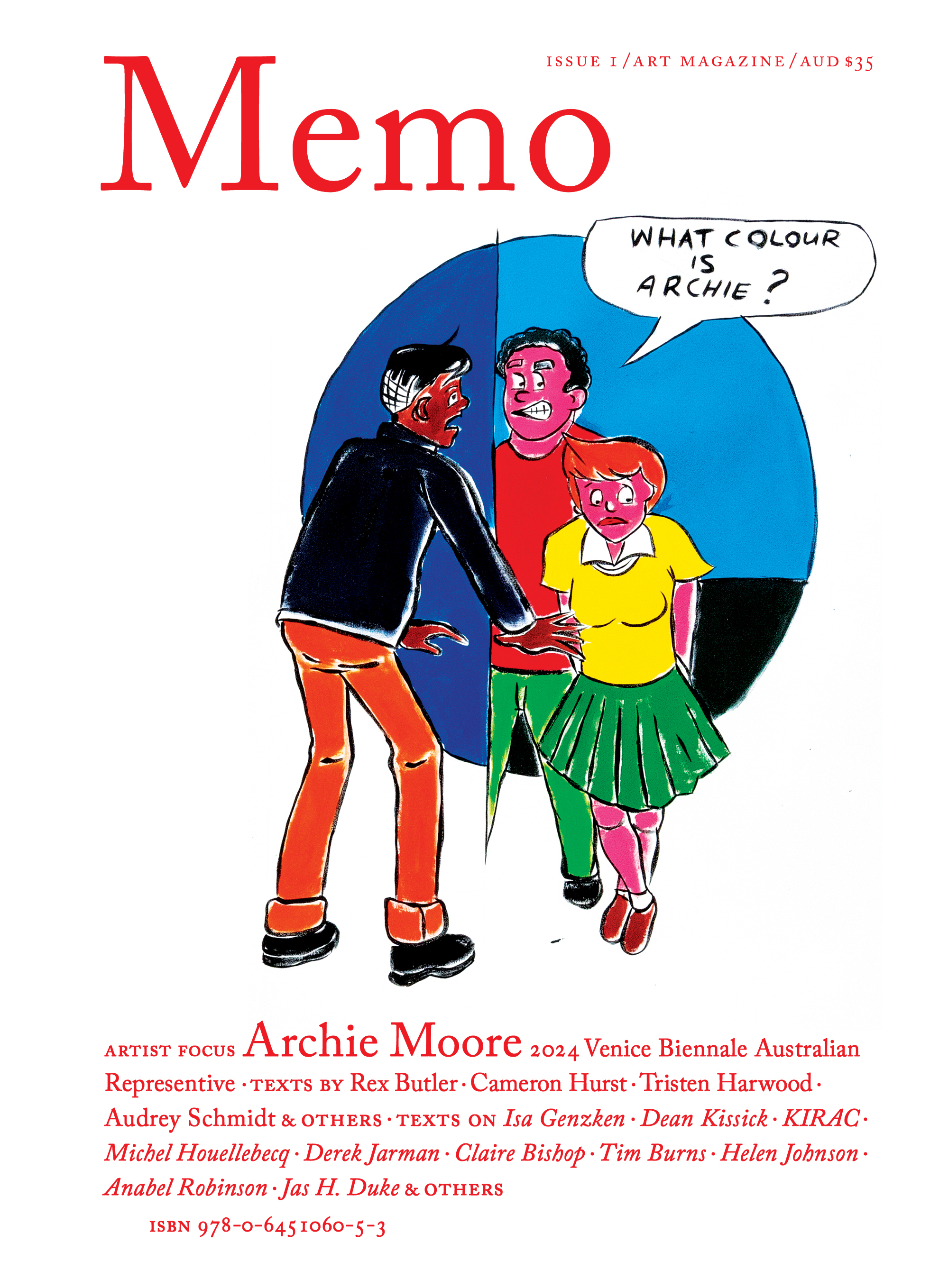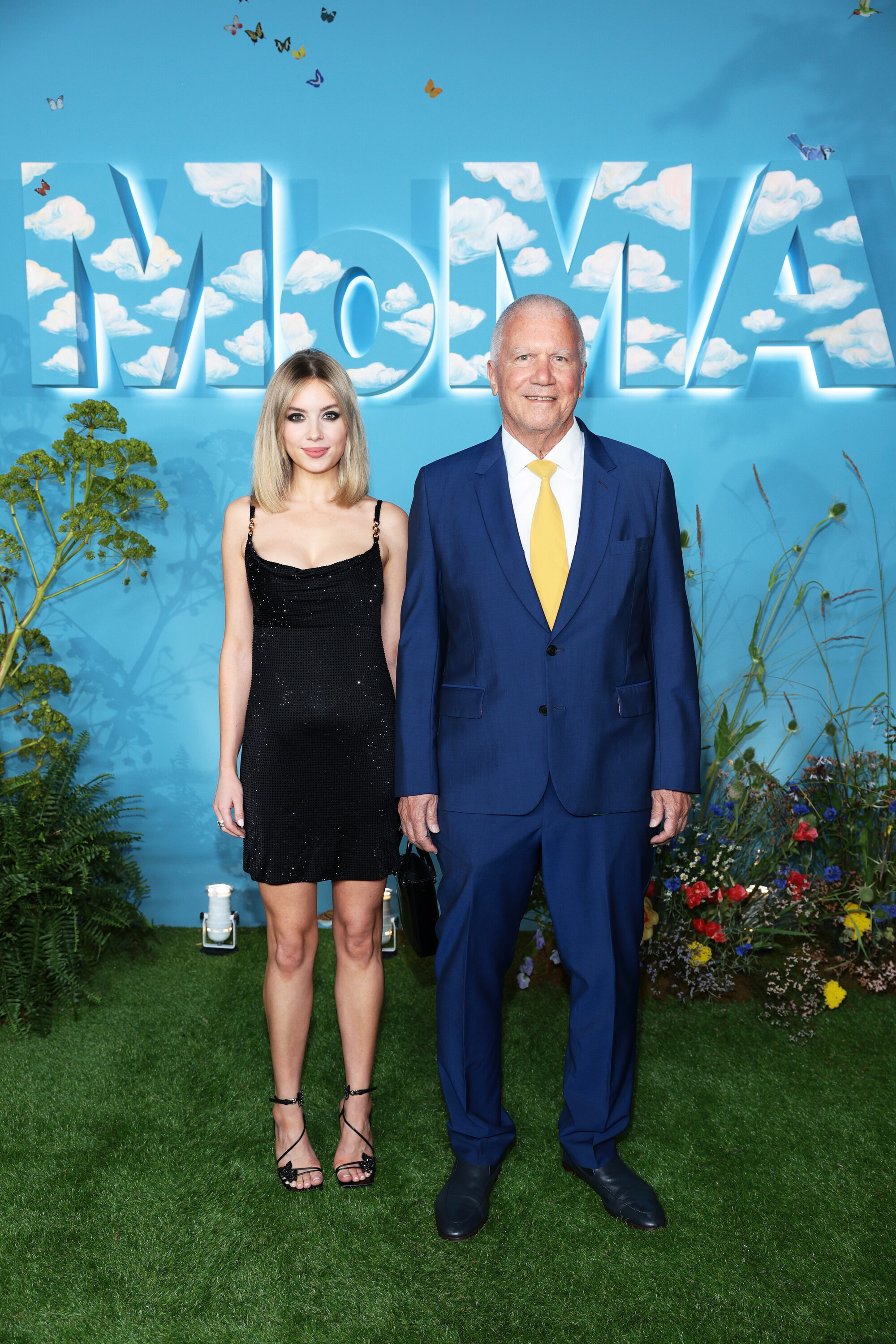Anna Higgins: Total Montage
Anna Higgins’s work operates within a cinematic, layered logic of montage—an intricate interplay of history, memory, and materiality.
By Giles Fielke
Issue 1, Summer 2023/24
“I just want to be like Scott Walker,” Anna Higgins tells me. Later, she quotes from a profile of the musician to clarify what she means: “like Andy Williams reinventing himself as Stockhausen.” This description, offered by Simon Hattenstone, encapsulates Walker’s career trajectory — from a member of the sixties pop group The Walker Brothers, to reclusive solo artist and experimentalist prior to his death in 2019.
Exclusive to the Magazine
Anna Higgins: Total Montage by Giles Fielke is featured in full in Issue 1 of Memo magazine.
Get your hands on the print edition through our online shop or save up to 20% and get free domestic shipping with a subscription.
Related

KIRAC’s gonzo filmmaking shatters art world niceties, but their entanglement with Michel Houellebecq—novelist, provocateur, reluctant porn star—turns chaotic. As lawsuits fly and reputations fray, the real spectacle isn’t the film itself but the battle over who gets to tell the story.
From Rhode Island School of Design‘s anti-commercial posturing to Gagosian’s prismatic salons, this fictional Anna Weyant chronicle exposes the brutal mechanics of ambition in contemporary art.

